Find Help
More Items From Ergsy search
-

What is high blood pressure?
Relevance: 100%
-

Seven Reaasons For Measuring blood pressure
Relevance: 96%
-
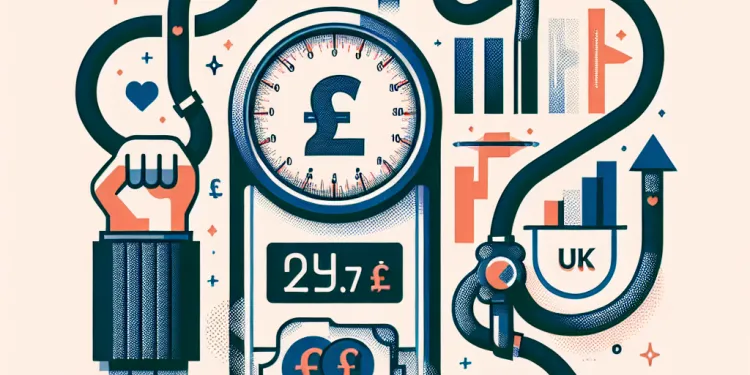
How is high blood pressure diagnosed?
Relevance: 95%
-
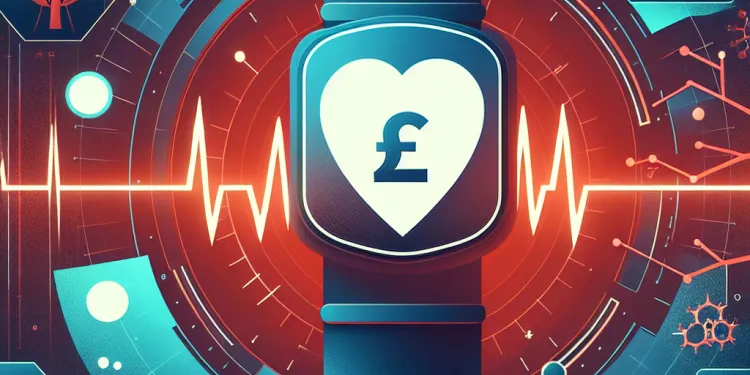
What causes high blood pressure?
Relevance: 95%
-

Can high blood pressure be prevented?
Relevance: 95%
-

Does caffeine affect blood pressure?
Relevance: 95%
-

How to take someone's blood pressure
Relevance: 93%
-

What are the risks of having high blood pressure?
Relevance: 91%
-

Is it safe to take blood pressure medication with coffee?
Relevance: 91%
-

How does diet affect blood pressure?
Relevance: 91%
-

Can stress cause high blood pressure?
Relevance: 91%
-

What is the role of potassium in managing blood pressure?
Relevance: 91%
-

How can high blood pressure be treated?
Relevance: 91%
-

How does caffeine affect blood pressure?
Relevance: 91%
-

How often should I check my blood pressure?
Relevance: 91%
-

Can decaffeinated coffee affect blood pressure?
Relevance: 89%
-
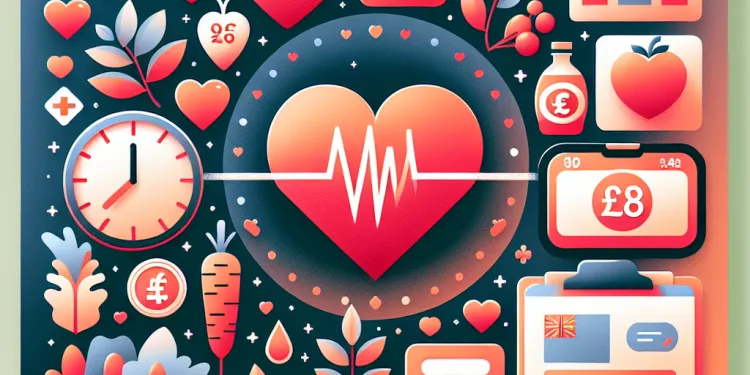
What lifestyle changes can lower blood pressure?
Relevance: 88%
-

How do medications help control high blood pressure?
Relevance: 88%
-

Why is high blood pressure called a 'silent killer'?
Relevance: 88%
-
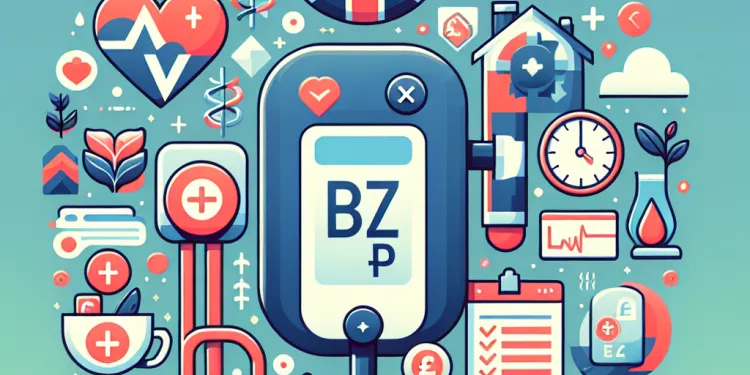
Can high blood pressure lead to other health problems?
Relevance: 85%
-

Blood pressure too high? Living with hypertension animation
Relevance: 85%
-
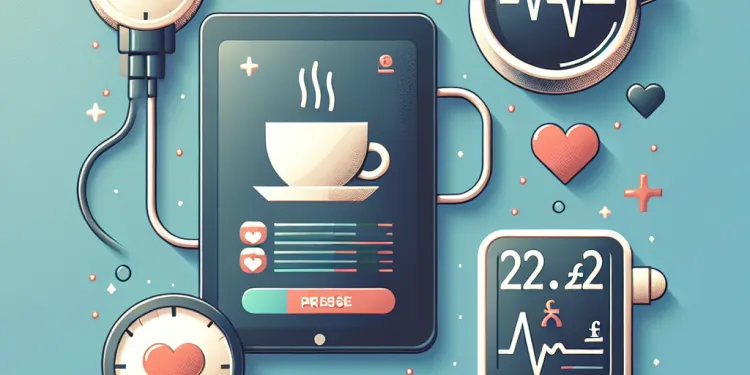
Are there any other factors in coffee that may affect blood pressure?
Relevance: 85%
-

Can weight loss help reduce high blood pressure?
Relevance: 85%
-
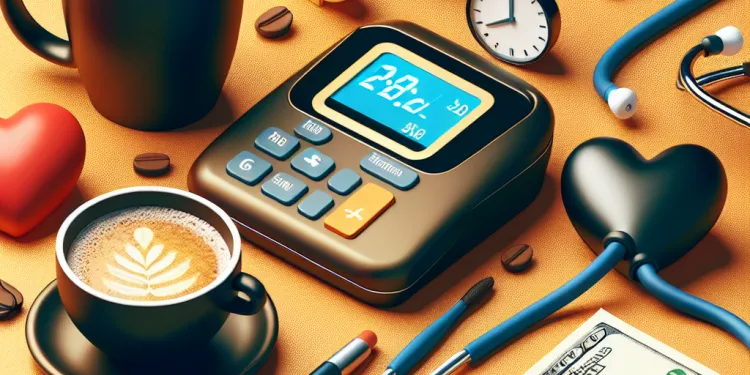
Should people with high blood pressure avoid coffee entirely?
Relevance: 85%
-

How can one minimize the impact of coffee on blood pressure?
Relevance: 84%
-

Is Your Morning Coffee a Risk Factor for High Blood Pressure?
Relevance: 84%
-

Is green tea a better alternative to coffee for blood pressure management?
Relevance: 84%
-

How soon after drinking coffee can blood pressure be affected?
Relevance: 82%
-

Is there a specific time of day when coffee has the most impact on blood pressure?
Relevance: 80%
-

How much caffeine is generally considered safe for people with high blood pressure?
Relevance: 79%
-

Does genetic makeup affect how coffee impacts blood pressure?
Relevance: 79%
-
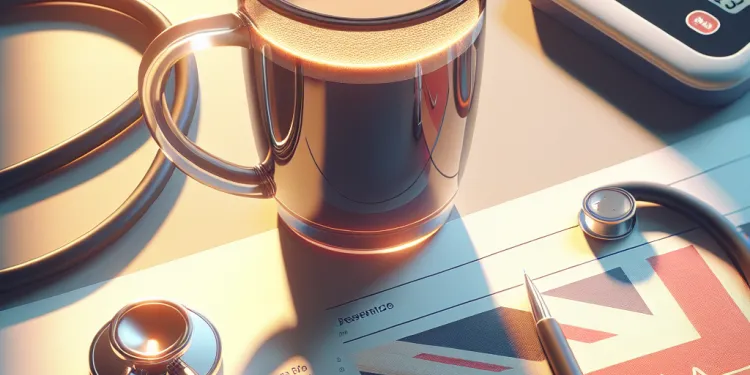
Does drinking coffee every morning increase the risk of developing high blood pressure?
Relevance: 77%
-

How does regular caffeine consumption impact tolerance and blood pressure?
Relevance: 77%
-
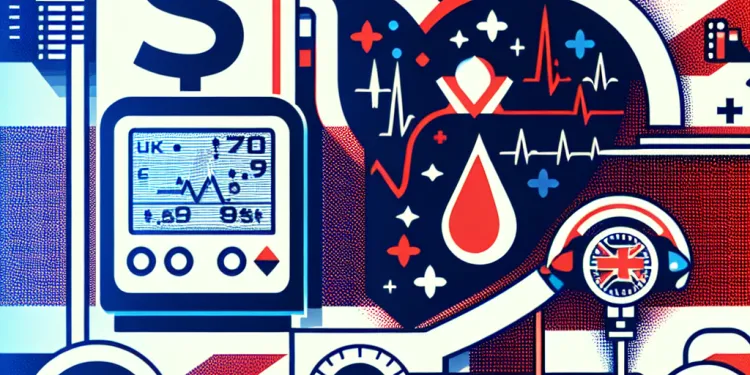
Is high blood pressure hereditary?
Relevance: 76%
-

What are normal blood pressure ranges?
Relevance: 72%
-

What are the symptoms of high blood pressure?
Relevance: 72%
-

What are the symptoms of caffeine-induced high blood pressure?
Relevance: 68%
-

Can stress related to caffeine consumption affect blood pressure?
Relevance: 61%
-

What is the link between coffee consumption and high blood pressure?
Relevance: 61%
-

Are there any self-tests for eye pressure?
Relevance: 60%
How to Take Someone's Blood Pressure
Introduction
Measuring blood pressure is an essential skill for healthcare professionals and can be valuable for caregivers and individuals monitoring their health. Using a sphygmomanometer (manual or digital) and a stethoscope (for manual readings), you can measure someone's blood pressure accurately. Blood pressure readings consist of two numbers: the systolic pressure (upper value) and the diastolic pressure (lower value). This guide will explain the process step-by-step.
Preparation
Before taking a blood pressure reading, ensure the person is relaxed. They should sit in a chair with their feet flat on the ground and their back supported. The arm used for the measurement should be at heart level, resting comfortably on a table or armrest. Ensure they have not eaten, consumed caffeine, or exerted themselves physically within the last 30 minutes.
Using a Manual Sphygmomanometer and Stethoscope
1. Position the Cuff: Wrap the blood pressure cuff snugly around the upper arm, about 2.5 cm above the elbow crease. Ensure it is neither too tight nor too loose.
2. Locate the Brachial Artery: Use your fingers to feel for the brachial artery pulse near the elbow's inner aspect. Place the stethoscope's bell lightly over this area.
3. Inflate the Cuff: Close the valve on the rubber bulb and rapidly inflate the cuff by squeezing the bulb. Inflate the cuff to about 20-30 mmHg above the point where the brachial pulse disappears.
4. Listen and Deflate: Open the valve slowly to deflate the cuff at a rate of 2-3 mmHg per second. Listen carefully for the Korotkoff sounds. The first sound you hear is the systolic pressure, and the point where the sound disappears is the diastolic pressure.
Using an Automatic Digital Blood Pressure Monitor
1. Position the Cuff: Wrap the cuff around the upper arm, ensuring it’s at heart level and fits snugly. Many digital monitors will guide you if the cuff placement is incorrect.
2. Start the Device: Ensure the person remains still and press the start button. The cuff will automatically inflate and then slowly deflate, displaying the blood pressure reading on the screen.
Recording and Interpreting Results
Record the systolic and diastolic readings along with the time of the measurement. It is useful to take multiple readings, especially if the first one is higher than expected, and then average these readings for a more accurate result. Normal blood pressure ranges for adults are around 90/60 mmHg to 120/80 mmHg. Consult with a healthcare professional to interpret the results and for guidance if readings fall outside this range.
Conclusion
Regular monitoring of blood pressure is crucial for identifying hypertension or other health issues early. Following these steps ensures a correct and reliable measurement. Whether using a manual device or a digital monitor, accuracy and consistency in the procedure are critical. For any concerns or abnormal readings, consult with a healthcare professional for appropriate advice.
How to Check Blood Pressure
Introduction
Checking blood pressure is important. Doctors, nurses, and caregivers often do this. It helps keep track of a person's health. You can use a special tool called a sphygmomanometer and a stethoscope, or a digital machine, to check blood pressure. There are two numbers in blood pressure: the top number (systolic) and the bottom number (diastolic). This guide will help you do it step by step.
Getting Ready
Before you check blood pressure, make sure the person is calm. They should sit in a chair with their feet flat on the floor and their back resting on the chair. The arm you use should be at the same level as their heart and rest on a table. Make sure they have not eaten, had caffeine, or exercised in the past 30 minutes.
Using a Manual Blood Pressure Tool and Stethoscope
1. Put on the Cuff: Wrap the cuff around the upper arm, a little bit above the elbow. It should be snug, but not too tight.
2. Find the Brachial Artery: Feel for the pulse near the inside of the elbow. Place the stethoscope gently over this spot.
3. Inflate the Cuff: Close the valve on the pump and squeeze it to fill the cuff with air. Stop when you don't feel the pulse anymore, adding about 20-30 more.
4. Listen and Release Slowly: Open the valve slowly to let air out. Listen through the stethoscope. The first sound is the systolic pressure. The point where the sound stops is the diastolic pressure.
Using an Automatic Digital Blood Pressure Machine
1. Put on the Cuff: Wrap the cuff around the upper arm. It should be at heart level and fit snugly. Many digital machines will show if it's not in the right place.
2. Turn On the Machine: Ask the person to sit still and press the start button. The cuff will inflate and then deflate by itself. The machine will show the blood pressure on the screen.
Recording the Results
Write down the systolic and diastolic numbers, as well as the time. It’s a good idea to take a few readings and write the average. Normal blood pressure for adults is between 90/60 mmHg and 120/80 mmHg. Ask a doctor or nurse to help understand the results if the numbers are not in this range.
Conclusion
Checking blood pressure often is important to spot any health problems early. These steps help you do it correctly. Whether using a manual tool or a digital machine, being careful and doing it the same way each time is key. If you have any worries or get unusual results, talk to a doctor or nurse for advice.
Frequently Asked Questions
What equipment do I need to take someone's blood pressure?
You’ll need a blood pressure monitor (either manual or digital), a stethoscope (if using a manual monitor), and a comfortable chair and table.
How do I prepare the person for taking their blood pressure?
Make sure the person is seated comfortably with their back supported, feet flat on the floor, and their arm resting on a table at heart level.
Should the person avoid any activities before taking their blood pressure?
Yes, they should avoid eating, drinking caffeinated beverages, smoking, and exercising for at least 30 minutes before the measurement.
Which arm should I use for the blood pressure measurement?
You can use either arm, but it’s best to use the same arm each time for consistency. The left arm is often preferred if there's no medical reason to use the other.
How do I position the cuff correctly on the arm?
Place the cuff on the upper arm, about an inch above the bend of the elbow. Ensure it fits snugly but not too tight.
What is the correct posture for the person during the reading?
The person should sit quietly with their feet flat on the floor and their arm supported at heart level, avoiding talking and moving.
How do I use a manual blood pressure monitor?
Wrap the cuff around the arm, place the stethoscope on the artery just below the cuff, inflate the cuff, slowly deflate it while listening for the first (systolic) and last (diastolic) heartbeat sounds.
How do I use a digital blood pressure monitor?
Wrap the cuff around the arm, turn on the machine, and start the measurement. The machine will automatically inflate and deflate the cuff and display the readings.
How tight should the cuff be around the arm?
The cuff should be snug but not too tight. You should be able to slip two fingers under the cuff comfortably.
What do the systolic and diastolic numbers mean?
Systolic pressure is the top number and measures the pressure in the arteries when the heart beats. Diastolic pressure is the bottom number and measures the pressure in the arteries between beats.
How often should someone have their blood pressure checked?
It depends on individual health circumstances, but generally, adults should have their blood pressure checked at least once every two years. Those with hypertension or other risk factors may need it checked more frequently.
What is considered a normal blood pressure reading?
A normal blood pressure reading for most adults is around 120/80 mmHg.
What should I do if I get a high reading?
If you get a high reading, wait a few minutes and take the measurement again. If it remains high, consult with a healthcare professional for further guidance.
Can factors like stress or anxiety affect the readings?
Yes, stress, anxiety, and other factors like recent physical activity, consumption of caffeine or alcohol, and smoking can affect blood pressure readings.
Is it necessary to record the readings?
Yes, keeping a record of blood pressure readings can help track trends over time and aid in managing health conditions. Note the date, time, and both systolic and diastolic numbers.
What do I need to check someone's blood pressure?
Here is a list of what you need:
- A blood pressure monitor
- A cuff that goes around the arm
- Someone to help, if needed
Tip: Ask an adult to help you or watch a video to learn how to do it.
You will need a blood pressure monitor. This can be a manual one or a digital one. If you use a manual monitor, you will also need a stethoscope. Make sure you have a comfy chair and table.
How can I get someone ready to check their blood pressure?
Here is a simple way to get ready to check blood pressure:
- Ask the person to sit in a comfy chair.
- Make sure they rest for 5 minutes.
- Tell them to keep their feet flat on the floor.
- Ask them to not talk or move around.
- Remind them to stay calm and relaxed.
Using reminders or a timer can help remember these steps. It is also good to use pictures to show each step.
Make sure the person sits in a comfy chair. Their back should be straight with support. Their feet should touch the floor. Their arm should rest on a table, level with their heart.
Should the person stop doing things before checking their blood pressure?
Before checking your blood pressure, sit down and relax. Try not to do anything hard, like running or lifting heavy things. This way, you will get the right number.
Here are some tips to help:
- Rest quietly for 5 minutes.
- Sit still and don't talk.
- Use a soft chair.
Yes, don’t eat, drink drinks with caffeine, smoke, or do exercise for at least 30 minutes before the check-up.
Which arm should I use to check my blood pressure?
Check your blood pressure on the arm your doctor uses. They might use your left or right arm. If you are not sure, ask your doctor. Use the same arm each time.
You can use a blood pressure monitor to help you check. Follow the instructions that come with it.
You can use either arm. But it's best to use the same arm each time. This helps keep things the same. Most people like to use their left arm. This is unless a doctor says to use the other one.
How do I put the cuff on the arm right?
Put the cuff on your upper arm. It should be about an inch above your elbow. Make sure it fits just right—not too tight and not too loose.
How should you sit when you are reading?
Sit quietly with your feet flat on the floor. Rest your arm so it is the same height as your heart. Don't talk or move around.
How do I use a manual blood pressure monitor?
A manual blood pressure monitor is a tool to check how strong your blood is pushing in your body.
Here is how to use it:
- Find a quiet place to sit.
- Put the cuff on your upper arm.
- Make sure the cuff is snug, but not too tight.
- Use the pump to fill the cuff with air.
- Slowly let the air out while listening to your heartbeat with a stethoscope.
- Watch the numbers on the gauge to see your blood pressure.
Ask an adult to help you if it feels hard.
Put the cuff around your arm. Place the stethoscope just below the cuff on your arm. Pump up the cuff. Let the air out slowly. Listen for the first heartbeat and the last heartbeat sounds.
If reading is hard, try using an audiobook or ask someone to read it to you. You can also use pictures or diagrams to help understand.
How do I use a digital blood pressure monitor?
A digital blood pressure monitor helps you check your heart health. Follow these steps to use it:
- Find a quiet place to sit and relax.
- Sit up straight with your feet flat on the floor.
- Put the cuff on your arm. Make sure it is snug but not too tight.
- Press the start button on the monitor.
- Sit still and wait for the machine to check your blood pressure.
- When it is done, read the numbers on the screen.
Ask someone to help you if you need it.
Put the cuff on your arm. Turn the machine on. It will fill up with air and let the air out by itself. It will show you the numbers.
How tight should the cuff be on your arm?
The cuff is the band that goes around your arm when you check your blood pressure. Here is how to make sure it fits right:
- The cuff should be snug but not too tight.
- You should fit one finger under the cuff easily.
- If it is too loose, it will not work well.
- If it is too tight, it will hurt.
Here is a tip: Ask someone to help you if you are not sure. That can really help!
The cuff should fit well, not too loose or too tight. You should be able to put two fingers under the cuff easily.
What do the top and bottom numbers in blood pressure mean?
The top number is called "systolic." It says how strong your blood is pushing when the heart beats. The bottom number is called "diastolic." It shows how strong your blood is pushing when the heart rests. If you need help reading, ask someone you trust or use a reading app.The top number is the systolic pressure. It shows how hard the blood pushes when the heart beats.
The bottom number is the diastolic pressure. It shows how hard the blood pushes when the heart rests between beats.
To help you read this better, you can: use a ruler or your finger to follow along, read out loud, or ask someone to read with you.
How often should you check your blood pressure?
It is good to check your blood pressure regularly to stay healthy.
Ask your doctor how many times you need to check it. They can help you decide.
If you have a machine at home, you can use it to check your blood pressure.
Writing down your blood pressure readings can also help you keep track.
How often you check blood pressure depends on your health. Usually, adults should get it checked every two years. If you have high blood pressure or other health problems, you might need to check it more often.
What is a normal blood pressure?
Blood pressure is the force of blood in your body. A normal reading is usually around 120/80.
Tips to help you understand:
- You can use pictures or videos to learn more about blood pressure.
- Talking to a doctor or nurse can help you understand what blood pressure means.
- There are apps and tools that can help you check your blood pressure.
Most grown-ups have normal blood pressure when it is about 120 over 80. This is written as 120/80 mmHg.
What should I do if my test is high?
If you get a high number, wait a few minutes. Then check it again. If it is still high, talk to a doctor or nurse to get more help.
Can feeling worried or stressed change the results?
Feeling worried or stressed can change how your body works. This can make test results look different. If you're feeling this way, try taking deep breaths or listening to calming music before a test. You can also talk to a friend or use apps that help you relax.
Yes, many things can change your blood pressure. Feeling worried or stressed can change it. Doing exercise, drinking coffee or alcohol, or smoking can also make a difference.
Do we have to write down the numbers we read?
Yes, writing down your blood pressure numbers can help you see changes over time. This can help you take care of your health. Write down the date, time, and both the top and bottom numbers from your blood pressure reading.
Useful Links
- Ergsy carfully checks the information in the videos we provide here.
- Videos shown by Youtube after a video has completed, have NOT been reviewed by ERGSY.
- To view, click the arrow in centre of video.
- Most of the videos you find here will have subtitles and/or closed captions available.
- You may need to turn these on, and choose your preferred language.
- Go to the video you'd like to watch.
- If closed captions (CC) are available, settings will be visible on the bottom right of the video player.
- To turn on Captions, click settings .
- To turn off Captions, click settings again.
More Items From Ergsy search
-

What is high blood pressure?
Relevance: 100%
-

Seven Reaasons For Measuring blood pressure
Relevance: 96%
-

How is high blood pressure diagnosed?
Relevance: 95%
-

What causes high blood pressure?
Relevance: 95%
-

Can high blood pressure be prevented?
Relevance: 95%
-

Does caffeine affect blood pressure?
Relevance: 95%
-

How to take someone's blood pressure
Relevance: 93%
-

What are the risks of having high blood pressure?
Relevance: 91%
-

Is it safe to take blood pressure medication with coffee?
Relevance: 91%
-

How does diet affect blood pressure?
Relevance: 91%
-

Can stress cause high blood pressure?
Relevance: 91%
-

What is the role of potassium in managing blood pressure?
Relevance: 91%
-

How can high blood pressure be treated?
Relevance: 91%
-

How does caffeine affect blood pressure?
Relevance: 91%
-

How often should I check my blood pressure?
Relevance: 91%
-

Can decaffeinated coffee affect blood pressure?
Relevance: 89%
-

What lifestyle changes can lower blood pressure?
Relevance: 88%
-

How do medications help control high blood pressure?
Relevance: 88%
-

Why is high blood pressure called a 'silent killer'?
Relevance: 88%
-

Can high blood pressure lead to other health problems?
Relevance: 85%
-

Blood pressure too high? Living with hypertension animation
Relevance: 85%
-

Are there any other factors in coffee that may affect blood pressure?
Relevance: 85%
-

Can weight loss help reduce high blood pressure?
Relevance: 85%
-

Should people with high blood pressure avoid coffee entirely?
Relevance: 85%
-

How can one minimize the impact of coffee on blood pressure?
Relevance: 84%
-

Is Your Morning Coffee a Risk Factor for High Blood Pressure?
Relevance: 84%
-

Is green tea a better alternative to coffee for blood pressure management?
Relevance: 84%
-

How soon after drinking coffee can blood pressure be affected?
Relevance: 82%
-

Is there a specific time of day when coffee has the most impact on blood pressure?
Relevance: 80%
-

How much caffeine is generally considered safe for people with high blood pressure?
Relevance: 79%
-

Does genetic makeup affect how coffee impacts blood pressure?
Relevance: 79%
-

Does drinking coffee every morning increase the risk of developing high blood pressure?
Relevance: 77%
-

How does regular caffeine consumption impact tolerance and blood pressure?
Relevance: 77%
-

Is high blood pressure hereditary?
Relevance: 76%
-

What are normal blood pressure ranges?
Relevance: 72%
-

What are the symptoms of high blood pressure?
Relevance: 72%
-

What are the symptoms of caffeine-induced high blood pressure?
Relevance: 68%
-

Can stress related to caffeine consumption affect blood pressure?
Relevance: 61%
-

What is the link between coffee consumption and high blood pressure?
Relevance: 61%
-

Are there any self-tests for eye pressure?
Relevance: 60%


